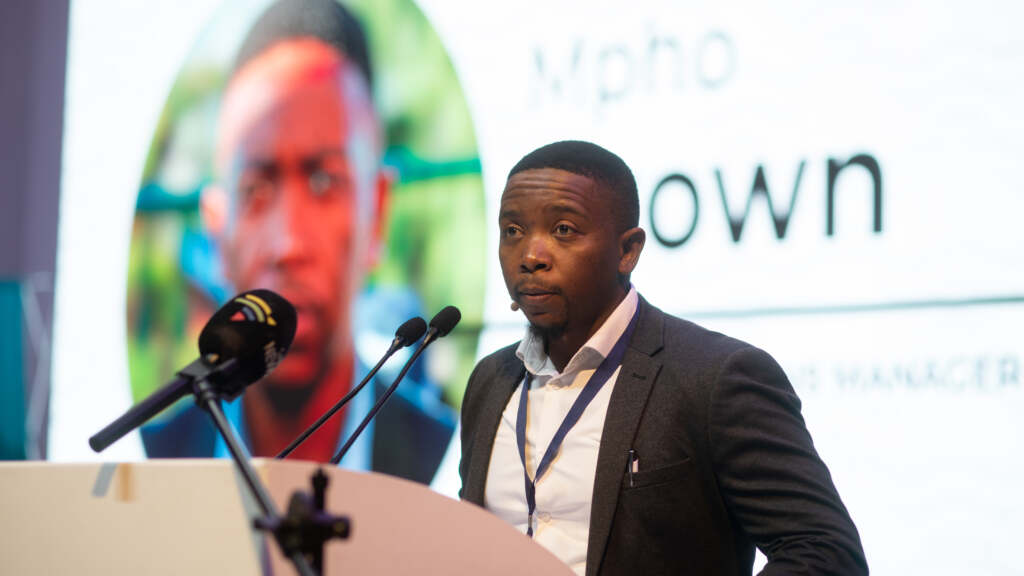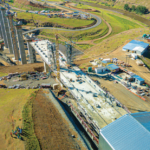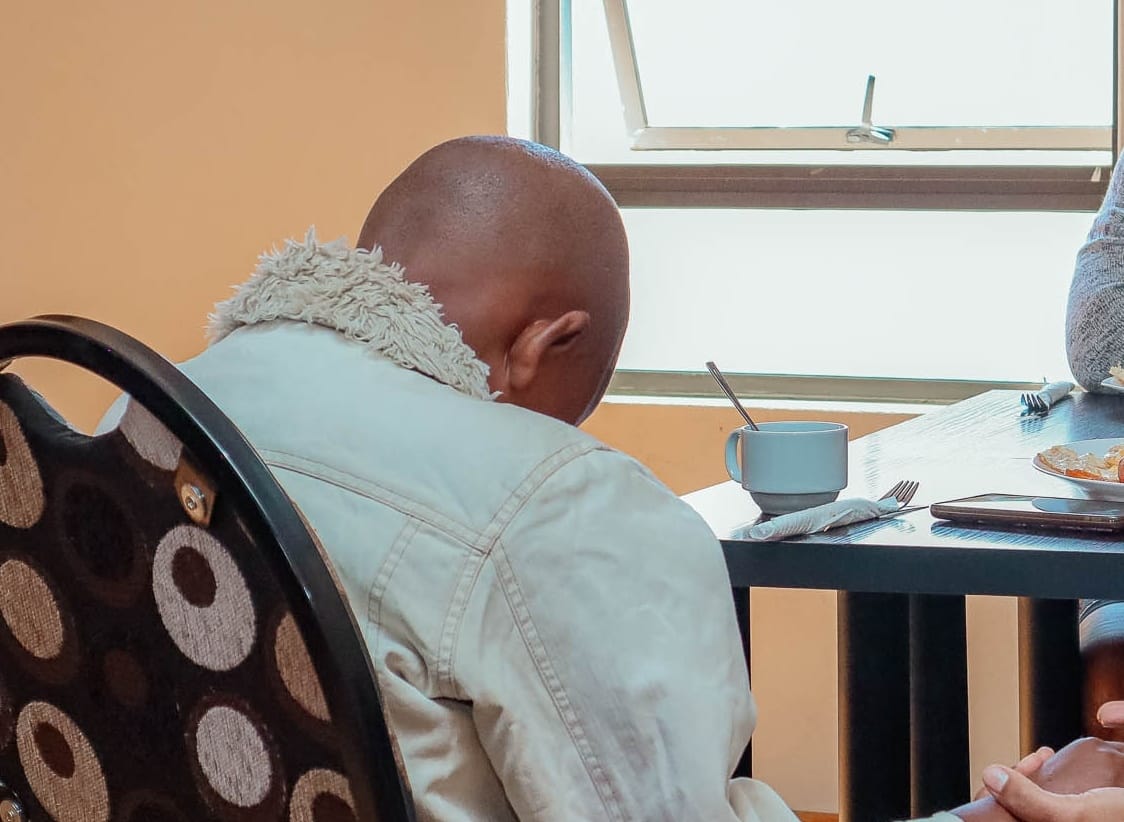The Lesotho Highlands Development Authority (LHDA) launched its 10-year strategy in March this year. Goal 1 of the strategy is “Enhancement of Inclusive Access to Water, Electricity, and Related Resources.” Newsday sat down with Mpho Brown, LHDA’s Public Relations Manager, to delve into the significance of this goal and the motivations behind its inclusion. Brown shared insights on the comprehensive vision of the LHDA, stressing the importance of providing inclusive access to essential resources for the communities in Lesotho, alongside the continued commitment to their established mandates of water transfer to South Africa and hydropower generation. Here are excerpts from the interview.
Newsday: At the Launch of the Lesotho Highlands Development Authority (LHDA) 10-year strategy in March this year, it was mentioned that Goal 1 of the new strategy is “Enhancement of Inclusive Access to Water, Electricity and related resources”. Why is this goal important to the LHDA and what prompted its inclusion in this new strategy?
Mpho Brown (MB): For too long the Lesotho Highlands Water Project has been known as a project that transfers water to the Republic of South Africa only and generates electricity in Lesotho in the process. However, we believe that our mandate and our impact are and should be much more than that. We believe that communities in Lesotho should have access to water and that we can play a role in making that happen. The most important words in that goal are “Inclusive Access”, highlighting our commitment to access for Lesotho and continued access and delivery to South Africa.
During the process of developing this new strategy – we engaged with the instruments that led to the formation of the project and founding of the LHDA, which articulate our core purpose and mandate, including the Treaty. What was important for us was that, in the treaty itself, under Article 4 which covers the purpose of the LHWP, article 4.2 clearly states that each country in this partnership can undertake any other developments through this project, in its own territory, as long as those do not interfere with the other purpose articulated in 4.1 of transferring water to South Africa, and generating hydropower in Lesotho. An important part of that is that each country can and should resource its own ancillary developments under the project when they do not fall within 4.1.
Therefore, this goal is extremely important to us because it explicitly states our intention to make sure that communities within Lesotho, within the project areas and beyond, have access to water – as the project continues to deliver on its mandate to deliver water to South Africa and generate hydropower.
Newsday: How exactly does the LHDA plan to start delivering water to communities in Lesotho? What are some of the immediate opportunities that exist within the project to enable that to happen? Will this water be sold to the government for distribution to consumers, and if so, at what cost?
MB: At the core of our new strategy is the element of the partnership. Ours is a partnership-driven strategy. Already within our governing instruments, there are allowances for this to happen – the LHWP system is allowed to store water of up to 15 million cubic metres (MCM), which can be released to Lesotho free of charge for any potential national need (e.g. drought seasons, etc). Currently, this water is accumulated at the rate of 3.75 MCM in any calendar year if none of it gets released. This water needs minimal treatment due to its already high quality and could then be reticulated into various lowlands zones or communities.
As you can tell – this is an approach and implementation that would require intent engagement and partnership with those who carry the mandate for national water development and distribution at various levels. We see this as an immediate opportunity that can be activated to initiate this part of our strategy because the instruments of the project already allow for this kind of use. Besides engagement and partnership – this kind of approach would also require financial resources from the government of Lesotho as this would fall under those developments explained in the Treaty under 4.2 that each country can undertake, for its own development, as long as they do not negatively affect the deliveries of water to South Africa or the generation of hydropower.
We are optimistic that with that stated allowable storage volume of 15MCM, more than enough water can be stored in the system and supply communities and other parts of the country over the next 10 years, attaining efficiencies and scale to increase those deliveries over time.
As you will tell from our other strategic goals – the financial sustainability of the LHDA is one of the big priority goals in this new strategy – and thus our partnerships with other agencies with the mandate to service and distribute to consumers, would need to reflect that so that the LHDA can recover costs of operation and maintenance.
We already have existing partnerships with agencies like the Department of Rural Water Supply, where delivery of water to project area communities is already happening at a certain scale – our ambition is to amplify that scale through expanded strategic partnerships with other players, for the ultimate benefit of Basotho.
Newsday: Are there initiatives in place to provide subsidised or free access to water for those who may struggle to afford it?
MB: It is important to share that, whilst it is our strongest ambition to ensure inclusive access to the water that runs through the project for Basotho, we are also cognizant of the fact that there are other government agencies that are set up specifically with the mandates of ensuring household level access to water in Lesotho both in the rural and highlands regions, as well as lowlands areas. Therefore, our partnership approach is worth reiterating here. As part of our partnership engagements and proposals with those relevant parties, it is our intention to include the considerations of affordability and subsidised rates for areas that have been directly impacted by the project. It is our belief that it is part of our obligation and a strategic imperative to achieve the inclusive access that we are pursuing in this goal. Our plan is to ensure that water is accessible, affordable with acceptable quality.
Newsday: Part of this Goal 1 is inclusive access to electricity as well. Given that Lesotho is still currently importing almost half of the electricity it needs; what opportunities is the LHDA looking to make use of, to contribute to domestic energy security and reduce reliance on electricity imports within Lesotho?
MB: The importation of electricity is driven by the levels of electricity consumption and use, versus how much we can generate as a country. It is no secret that Basotho, including the Principals of the LHWP and our Authorities in Government, would like to see Lesotho become a net exporter of clean/renewable energy. We are also of the view that the opportunity indeed is there for Lesotho to generate more power than it consumes, with the right mix of hydro and solar power. Hydropower is already a method that is tried and tested that we are continuing to use and to expand in Phase II of the LHWP. It is important to note that, by increasing the volume of water to be delivered to RSA (Phase II) the amount of energy produced by the ‘Muela Hydropower Station will increase. Furthermore, the Oxbow Hydropower Scheme is also intended to increase the supply from the LHWP.
That said – we have a unique opportunity at LHDA to harness not just the hydropower, but to also generate solar power. An added advantage is that our climate in Lesotho is favourable due to long periods of sunshine and elevated terrains of open space – the LHDA also has these vast areas of flat space; that is the surface of the reservoirs. We will take that opportunity and develop plans for Floating Solar Photovoltaic Systems (FSPV), allowing solar panels to float on small segments of the surface of the water, and generating solar power that can be connected to the grid for distribution.
Some preliminary feasibility studies have shown us that – if we were to utilise the surface of the dam at Polihali for FSPV when it is complete – we could generate up to 138MW capacity. With only three percent of the surface area of the reservoir. At the Katse Dam, the total potential capacity from solar is up to 230MW, while at Mohale it is 195MW from solar. And these are with simply using small fractions of the total surface area of the Dams.
As we speak, we have already started with the exploration of solar power with an island solar project at Polihali, where the solar plant, rather than being on the water, will be on a piece of land that is going to form an island in the water when the dam is full. The power generated from this will be plugged right into the grid to be distributed by the relevant government agencies with that mandate, whilst at the same time generating revenue for the LHDA, again addressing our ambitions of financial sustainability articulated in Goal 3 of the strategy.
And here once again, as mentioned earlier – through partnership, negotiation and collaboration, we intend to ensure that communities immediately in the project area who have been impacted by the project will be connected to that electricity supply, affordably.
The FSPV approach has multiple benefits, some of which are that solar plants are safer from unintentional damage or vandalism when they are away from land and in the water, second being that the shade may benefit some aquatic life and reduce the rate of evaporation of water from the dam surface.
We are excited of the possibilities for this additional form of renewable energy as a project and we believe it is going to help us achieve the inclusive access that we are pursuing for not just the communities in the project area, but for Lesotho as a whole.
Newsday: Can you provide insights into how the LHDA plans to achieve the goals it has set for itself of increasing power generation in the country by 2030? What are the key projects contributing to this increase?
MB: The key energy component within the LHWP at this point is still hydropower. With the ongoing construction of Polihali Dam, there is also a hydropower component to Phase II that is running alongside the Dam and tunnel construction. An increase in power generation will be achieved in a few ways between now and 2030. The completion of Polihali Dam is going to bring with it, water that is going to flow to Katse Dam, then onwards to Muela Hydropower Station, before it goes through the transfer tunnel South Africa. This increased rate of volume of water through the Muela Station is going to lead to an approximate 30 percent increase in the electricity generation at Muela Station.
Secondly, Phase II has within it, the Oxbow hydropower scheme, which is currently in the early stages, the procurement of the design and construction supervision supplier is ongoing, and that of environmental and social impact assessment studies. It is anticipated that when the Oxbow scheme is complete, it will contribute about 90MW in peaking generation on top of the already 72MW at Muela, as well as the various mentioned FSPV projects in the plans. On top of this, the island solar project at Polihali will add 14MW, whilst a mini-hydro power station at Polihali also will add 4.8MW capacity. These are just some of the ways that we envisage ourselves being able to meet these lofty ambitions.
Summary
- Brown shared insights on the comprehensive vision of the LHDA, stressing the importance of providing inclusive access to essential resources for the communities in Lesotho, alongside the continued commitment to their established mandates of water transfer to South Africa and hydropower generation.
- At the Launch of the Lesotho Highlands Development Authority (LHDA) 10-year strategy in March this year, it was mentioned that Goal 1 of the new strategy is “Enhancement of Inclusive Access to Water, Electricity and related resources”.
- This goal is extremely important to us because it explicitly states our intention to make sure that communities within Lesotho, within the project areas and beyond, have access to water – as the project continues to deliver on its mandate to deliver water to South Africa and generate hydropower.

Your Trusted Source for News and Insights in Lesotho!
At Newsday Media, we are passionate about delivering accurate, timely, and engaging news and multimedia content to our diverse audience. Founded with the vision of revolutionizing the media landscape in Lesotho, we have grown into a leading hybrid media company that blends traditional journalism with innovative digital platforms.








